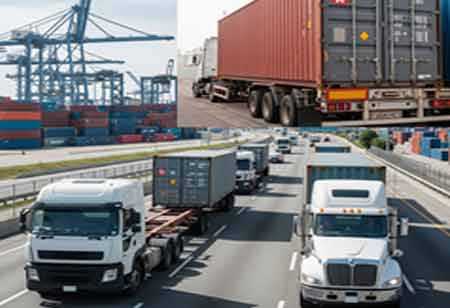The shift toward viewing drayage as a comprehensive part of logistics strategy enhances service offerings, improving customer satisfaction and loyalty. Embracing the change boosts operational efficiency and stabilizes Canadian businesses in a competitive global market. Optimizing cost elements in drayage can give firms a crucial edge over competitors. Fleet management systems use predictive analytics to reduce empty miles and maximize truck allocation.
Container drayage services in Canada are evolving from a traditional, fragmented industry into a digitally enabled, performance-driven sector. AI, automation, and smart logistics strategies empower companies to meet rising customer expectations while addressing operational and environmental challenges. Integrating technology into every aspect of container movement will be key to the future competitiveness and sustainability of Canada’s freight and logistics ecosystem.
Adapting to Evolving Trade Demands
The most transformative force in the market is integrating artificial intelligence into logistics and drayage operations. AI is reshaping route optimization, container tracking, asset utilization, and fleet management. Algorithms now predict traffic patterns, port congestion, and delivery timeframes more accurately, allowing for better scheduling and reduced idle time. It enables carriers and freight brokers to make data-driven decisions, improving turnaround times and customer satisfaction.
Recent trends highlight the shift toward electric and hybrid drayage trucks as part of broader efforts to reduce emissions in urban centers. Alongside electrification, digitalization is at the forefront, with real-time tracking platforms, automated billing, and paperless workflows improving transparency and compliance. Companies adopt shared logistics hubs and off-dock storage solutions to bypass congestion at major port terminals. The trend supports faster container retrieval and aligns with cost-control strategies.
Many smaller firms still rely on manual processes, which hinder interoperability and slow communication. Cloud-based systems are being developed with user-friendly interfaces to encourage adoption even among non-tech-savvy operators. The platforms facilitate real-time data sharing, document exchange, and performance tracking. As trade volumes grow and Canadian ports invest in expansion, the need for scalable, intelligent, and resilient drayage solutions becomes more urgent. For customs and regulatory compliance, AI streamlines documentation, flagging discrepancies and reducing the likelihood of delays at border crossings.
Operational Impact and Market Value
Container drayage services are essential in intermodal transportation, bridging the gap between ports and distribution centers, rail terminals, warehouses, and end customers. The effectiveness of these services directly influences supply chain efficiency, inventory turnover, and customer satisfaction across sectors, including retail, agriculture, manufacturing, and energy. As more businesses adopt just-in-time delivery models, reliable short-haul container movement has become critical. AI-powered applications in the drayage ecosystem enhance efficiency and planning.
Digital freight matching platforms instantly connect available drivers with container loads, maximizing asset use and minimizing delays. In some operations, AI-enabled systems even recommend maintenance schedules based on vehicle data, helping prevent breakdowns and prolong equipment life. The strategic impact of AI and automation extends beyond individual operations. As customer expectations for speed and real-time updates grow, digital interfaces offer end-to-end container movement visibility. Transparency strengthens relationships between carriers, brokers, and clients while reducing errors and disputes.
The value of drayage services is enhanced when integrated with larger logistics objectives, such as reducing carbon footprints, improving cost efficiency, and ensuring reliability. As infrastructure develops and logistics technology advances, container drayage has transformed into more than just a means of transporting cargo; it has become a valuable service that can impact the competitiveness of the market and the operational flexibility of Canadian companies. In today’s fast-evolving logistics landscape, aligning drayage operations with overall business goals can lead to substantial benefits.
Solutions and the Growing Need for Innovation
Port congestion, labor shortages, fuel costs, and fragmented communication systems hinder operational fluidity. Seasonal disruptions, such as extreme weather, further impact reliability. Addressing these issues requires a combination of AI deployment, infrastructure investment, and workforce development. Companies invest in mobile dispatch platforms that improve driver engagement and reduce administrative burden. The tools enable flexible scheduling, real-time job updates, and integrated routing support, fostering higher productivity and retention. Route optimization algorithms help reduce fuel usage and operational costs, particularly for repeat routes and congested areas.
Infrastructure inefficiencies also present barriers. Inadequate staging areas, limited truck gates, and aging roadways delay cargo movement. Innovative yard management systems and appointment-based pickup solutions are increasingly adopted to control flow at terminals and distribute workloads more evenly across the day. The systems reduce bottlenecks and enable more consistent delivery schedules. Another concern is the lack of digital standardization among logistics partners.










